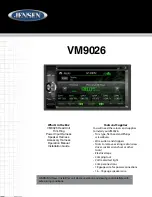
Real-World Environment
Satellite Navigation
82
User Manual 1178.6379.02 ─ 01
●
Up to 2 x R&S
SMW-K108
(required for the simulation of static multipath, antenna pattern and body mask)
10.2 Spinning and Attitude Simulation
In a real-word scenario, a receiver placed in an airplane does not always receive the
signal of all theoretically visible satellites at its current position. Depending on the ori-
entation of the vehicle, several satellites can be partly or completely obscured. The ori-
entation of the vehicle is described with the three flight dynamics parameters, the yaw
(heading), pitch (elevation) and roll (bank), see
.
Equipped with option R&S
SMW-K108, the R&S
SMW allows you to configure a vehi-
cle attitude or the body rotation parameters yaw, pitch, and roll. The instrument calcu-
lates the power and the carrier phase response of a specific satellite or a multipath
reflection at a specific angle of arrival (AoA). The calculation is based on the defined
attitude profile and the selected antenna pattern. The powers and carrier phase offsets
of all satellite signals are updated in real time and with an update rate of 800
Hz.
With enabled spinning, the software additionally simulates a constant rate of change of
the roll.
Figure 10-1: Flight dynamics parameters: yaw (heading), pitch (elevation) and roll (bank)
See:
●
●
10.3 Antenna Pattern and Body Mask
In the practice, a moving receiver is actually a GNSS receiver mounted in a car, air-
plane or other vehcile. A GNSS receiver often comprises of more than one antenna or
uses directional antennas rather than isotripic one for improving the reception.
Antenna Pattern and Body Mask
















































